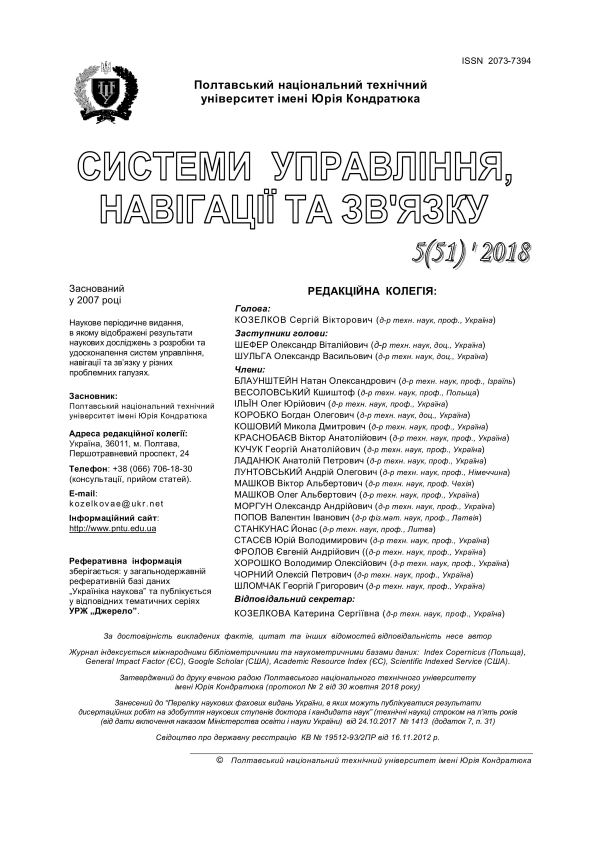METHOD OF CONSTRUCTING CONTEXT-ORIENTED RULES IN THE TEMPORAL KNOWLEDGE BASE
DOI:
https://doi.org/10.26906/SUNZ.2018.5.115Keywords:
temporal knowledge base, temporal rules, logical facts, sequence of states of the control objectAbstract
The subject matter of the article is the processes of construction and use of temporal knowledge in the management of the enterprise in the conditions of uncertainty, which is the result of incompleteness of information about the current state of the enterprise. The goal is to develop a method for constructing temporal rules that take into account the change in the context of the implementation of actions at different levels of the organizational hierarchy when implementing enterprise management. Tasks: to distinguish the context-oriented temporal rules from the rules that connect the successive states of the object of management; develop a method for constructing context-oriented temporal rules based on information set and values of variables characterizing successive states of the control object. The methods used are: methods of constructing temporal rules that connect the successive states of the object of management, the method of calculating the weight of the rules in Markov's logical network, methods of probabilistic output in the temporal knowledge base. The following results are obtained. The features of the implementation of context-oriented temporal rules for the sets of input data, which specify the sequence of states of the control object in the form of sets of properties of its atomic components, are singled out. The method of construction of context-oriented temporal rules is developed, which takes into account the differences between the variables, which set the static and dynamic characteristics of the object of management. Conclusions. Scientific novelty of the obtained results is as follows: the method of constructing context-oriented temporal rules is proposed. The rules take into account the change in the context of the implementation of actions as a set of properties of the atomic components of a complex object of management. The method contains steps for selecting a subset of the state of the control object at a specified level of detail; the formation of facts-antecedents and facts-records that reflect the static and dynamic characteristics of the context of the implementation of actions on the control object; construction, integration and quantification of temporal rules. The method provides the possibility of analysis and classification of the current state and prediction of the behavior of the object of management in conditions of uncertainty on the basis of the connection between the actions performed and the current state of the subject area.Downloads
References
Kalynychenko, O., Chalyi, S., Bodyanskiy, Y., Golian, V., Golian, N. (2013, September). Implementation of search mechanism for implicit dependences in process mining. 2013 IEEE 7th International Conference on Intelligent Data Acquisition and Advanced Computing Systems (IDAACS). Institute of Electrical and Electronics Engineers (IEEE). Available: https://doi.org/10.1109/idaacs.2013.6662
Bubnicki Z. (2005). Modern control theory. Berlin: Springer 423.
Shin J., Wu S., Wang F., De Sa C. Zhang С, R´e С. (2015). Incremental Knowledge Base Construction Using DeepDive. 41 th International Conference on Very Large Data Bases (VLDB). Vol. 8(11).
Niu F., Zhang C., Re C. (2012). DeepDive: Web-scale Knowledge-base Construction using Statistical Learning and Inference. VLDS, 25–28.
Levykin V., Chala O. (2018). Method of automated construction and expansion of the knowledge base of the business process management system. EUREKA: Physics and Engineering, 4, 29-35.
Чала О. В. (2018). Побудова темпоральних правил для представлення знань в інформаційно-управляючих системах. Науково-технічний журнал, Сучасні інформаційні системи, Том 2, № 3. С. 54-59.
Levykin V., Chala O. (2018). Development of a method of probabilistic inference of sequences of business process activities to support business process management. Eastern-European Journal of Eenterprise Technologies, 5/3(95). С. 16-24. DOI: 10.15587/1729-4061.2018.142664.
Чала О. В. (2018). Метод ієрархічного виведення в базі знань інформаційно-управляючої системи в парадигмі «Enterprise 2.0». Збірник наукових праць.Системи управління, навігації та зв’язку, № 4 (50). С. 86-90.
Levykin V., Chala O. (2018). Method of determining weights of temporal rules in markov logic network for building knowledge base in information control system. EUREKA: Physics and Engineering, 5(18), 3-10.




